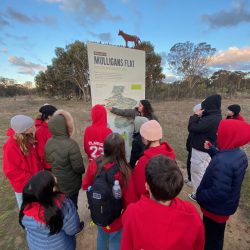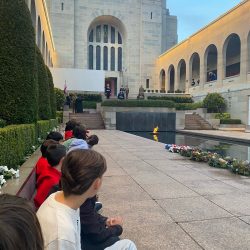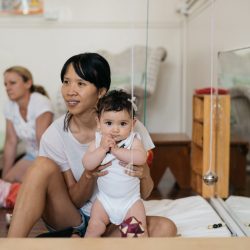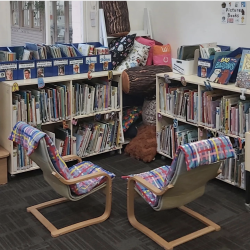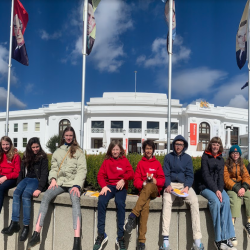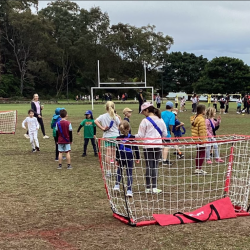Language and Literacy
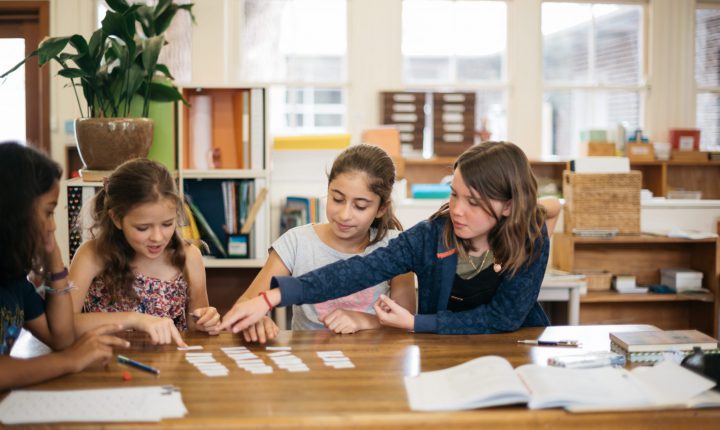
The Montessori learning environment is designed so that all activities lead naturally towards the development of skills required for language and literacy.
What do the children explore as part of the Montessori Language lessons in our Primary classrooms?
Spoken Language
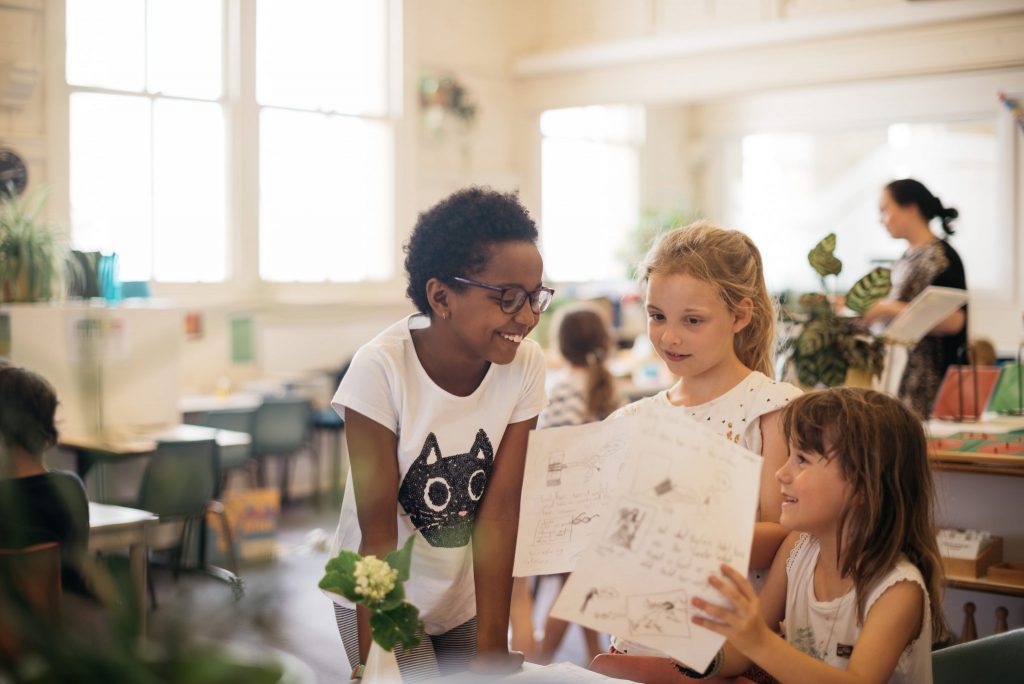
Spoken language is greatly valued in Montessori classrooms and is an essential aid to the written language work which begins in the 3 – 6 (Stage 1) classroom environment. The children are encouraged to tell stories, share work and experiences, conduct class meetings, debate topics and share opinions.
Asking questions and exploring curiosities is a key component of all learning within the Montessori environment. Collaborative work in all areas of the curriculum means that the children are given regular opportunities to discuss their learning, express ideas, solve problems and take active roles in decision making.
Written Language
Handwriting
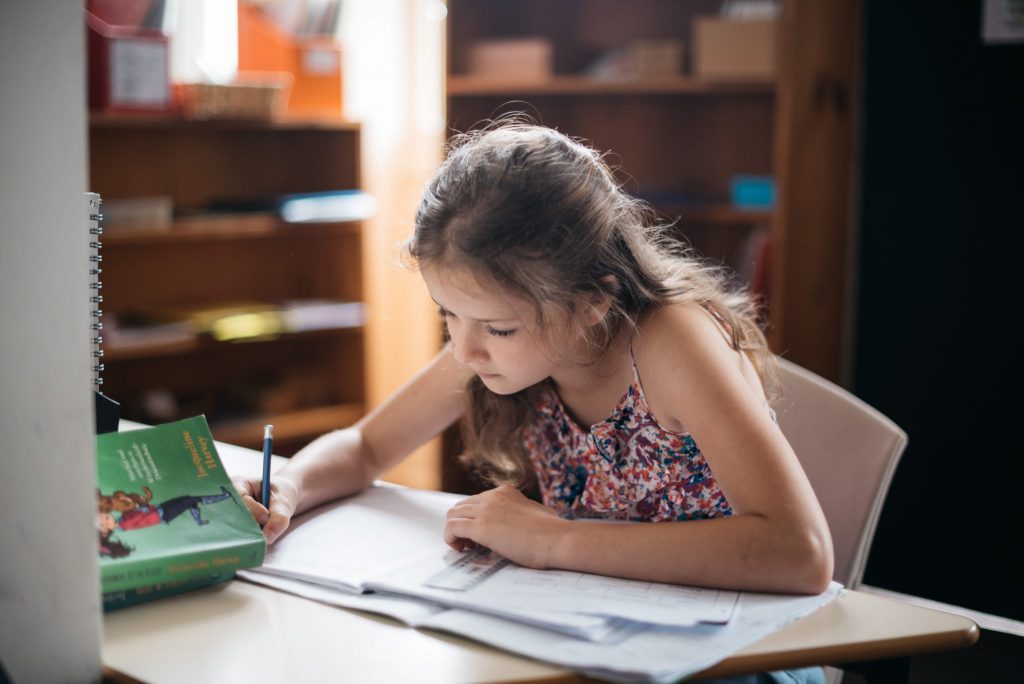
- In our classrooms, cursive handwriting is given a particular emphasis and is introduced to children from the very beginning of their handwriting development in the 3 – 6 (Stage 1) classroom.
- Foundation-style print handwriting is also developed alongside cursive handwriting in the Primary years. As part of our appreciation for the art of writing, calligraphy is taught and explored by children with an interest in these writing styles.
Written Expression
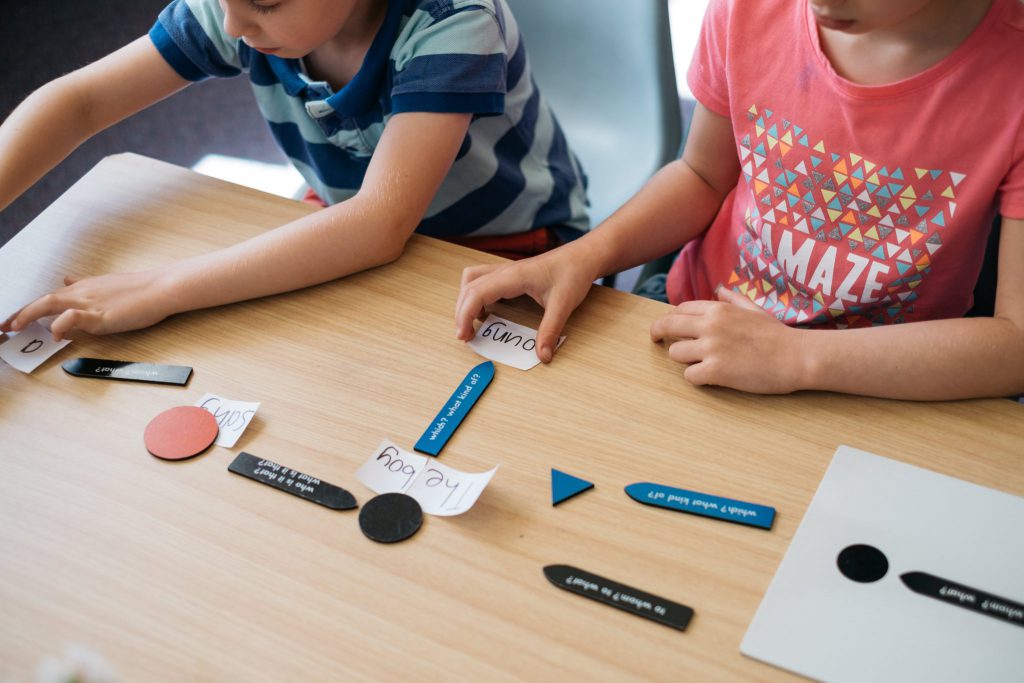
Written language is introduced to children in Montessori Primary classrooms through a key story called ‘The Story of Communication in Signs’, told by the adult when six-year old children enter the class. ‘The Story of Communication in Signs’ introduces children to the origins of our written language, beginning with the need for early humans to use symbols and tracing these symbols through history to the development of the alphabet we use today. Understanding the historical purpose of written communication creates, for our children, a thread to our human history and an appreciation for the symbols that they themselves use to communicate each day. The exploration of written language within history is an ongoing theme in Montessori classrooms.
- Writing begins in the Montessori classroom when children aged 3 – 6 enter the Stage 1 classroom.
- For the 6 – 12 year old children entering the Stage 2 classroom, writing becomes a tool for them to communicate, express themselves, convey their learning and explore their imagination. The children are given key lessons on writing for a variety of purposes such as to tell a story, provide information, convey an opinion, persuade or develop their creativity.
- The children’s creative written expression is greatly encouraged and is not limited to particular topics and structures.
- Poetry and the art of written language holds significant value in Montessori classrooms.
- Project work is a key component of the Montessori classroom. The children are encouraged to conduct projects on topics of interest and are supported in structuring, researching and presenting their findings to others.
- Grammar has always been a key component of Montessori language and is strongly supported by the use of Montessori materials.
- Spelling is practised and explored in interactive ways each day as the children learn the rules and accuracy of our written language.
Reading
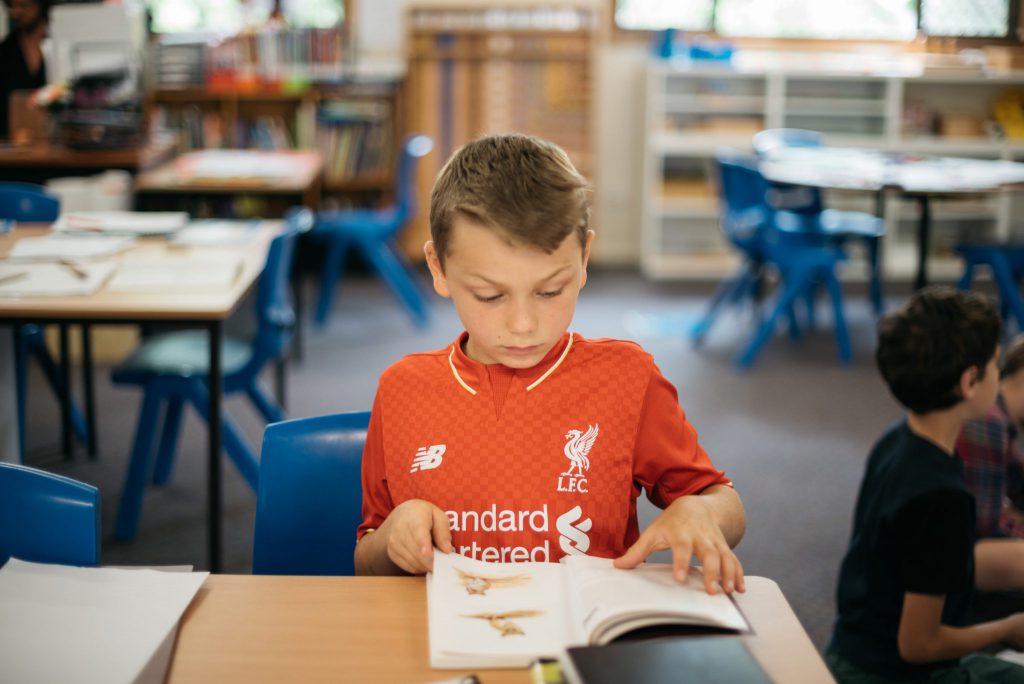
- Reading in Montessori begins with children in the 3-6 classroom. Once the children enter the Stage 1 classroom, reading is integrated into all areas of the curriculum as the children access written materials and literature to explore their interests and develop their understanding. While children are learning to read, the adult strives to introduce children to meaningful texts, which engage the child’s curiosity and natural motivation to learn.
- Montessori classrooms provide children with many hands-on reading materials to support the children’s explorations of grammar and syntax, word study, vocabulary, and parts of speech.
- Many Montessori materials for reading are embedded with comprehension.
- Storytelling and poetry are significant components of Language in the Montessori classroom as these art-forms help to inspire children in their own work and to create a love and appreciation for literature.
- Independent and peer reading are daily activities within the classroom.
What is the Montessori approach to language in the Primary classroom?

- Language lessons are given in small groups based on either age, ability or interest.
- Lessons may be given to children one-on-one to meet their specific needs.
- The origins of our oral and written languages are introduced to the children through storytelling.
- The children can choose to work independently or collaboratively when exploring lessons in language.
- Older children and younger children work collaboratively to support one another in reading, writing and spelling.
- The etymology and origin of words in the English language is given particular significance.
- A connection between the mind, the heart and the hand is a made to support meaningful learning.
How do the Montessori materials support learning in language in the Primary classroom?
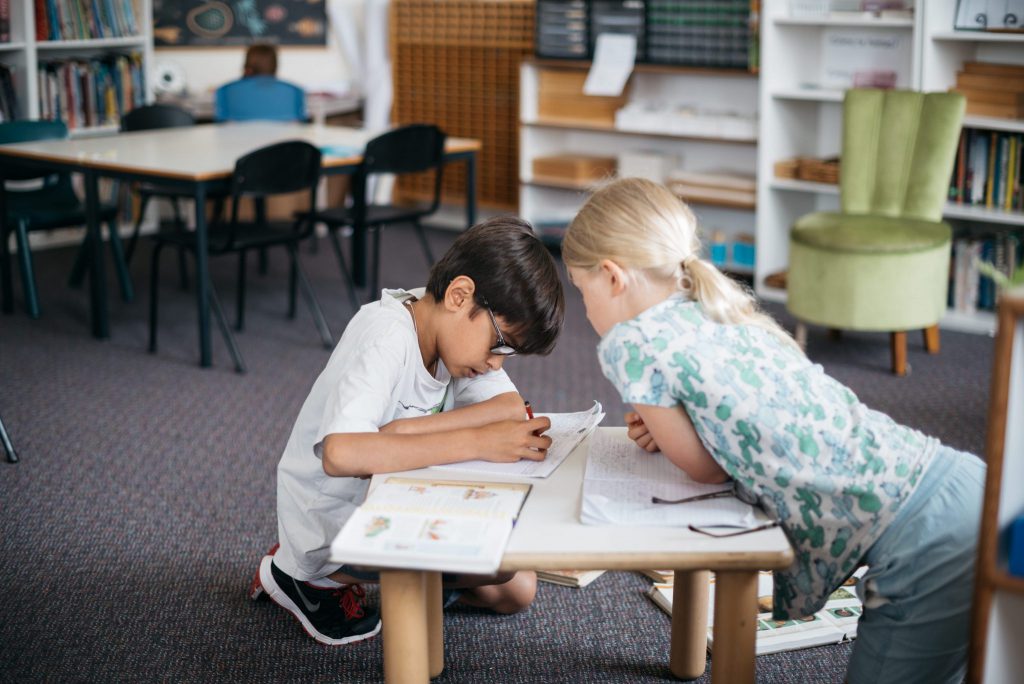
- Each language lesson is supported by a hands-on material.
- The materials in this area involve the children sorting, classifying, reasoning and discussing their learning.
- The children are encouraged to explore language in creative ways such as through movement, symbols, poetry, observations, charts and visual representations.
- Information and Communication Technology (ICT) is used within the classroom to support the children’s research and presentation of their knowledge once they have explored other avenues such as books and discussions.
- Particular significance is given to ICT in Stage 3 (9 – 12 years) as the children are given lessons to support and prepare them for their transition to high school.


